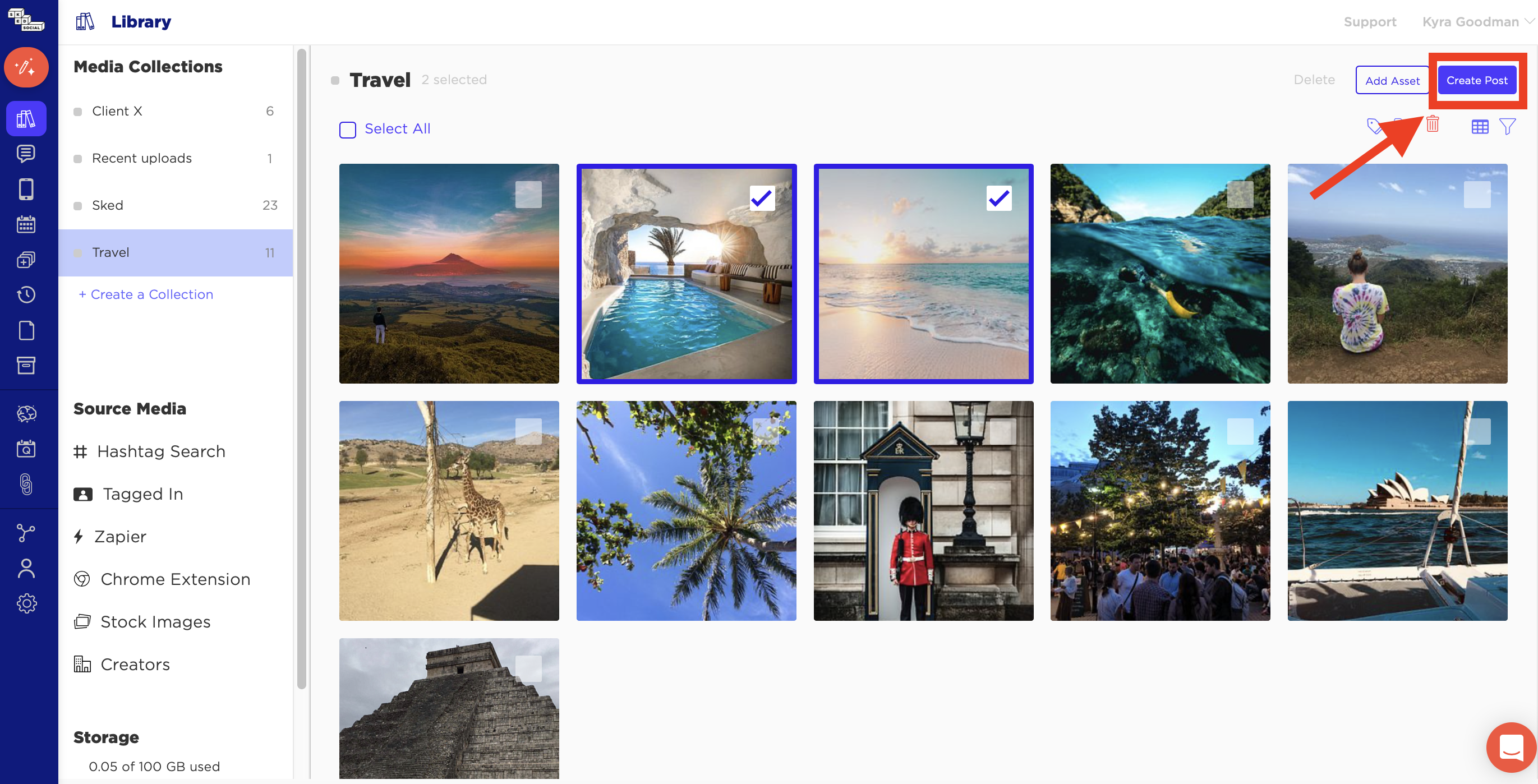Library User Guide
Summary
Easily store, organize, search, share and publish all of your digital assets with our new Library.
Sked Library is a management system for social media managers to store media collections and outsource user generated content (UGC). Because it's fully integrated with Sked Social, you can access your own content, find UGC and create new posts with a few clicks, all on the same platform.
Table of contents:
- Media collections
- Asset tags
- Source media
-
Instagram hashtag search
-
Instagram posts you are tagged in
-
Influencers
-
Stock Images
-
Zapier Integration
-
Google Chrome Extension
- Create a post from assets in your collection
Media Collections
Media Collections is where you will store and organize all of your assets. This is great for personal storage as well as content for clients.
Collections are basically folders that you can organize and separate your assets. To create a new collection, go to your Library and then click Create a Collection.
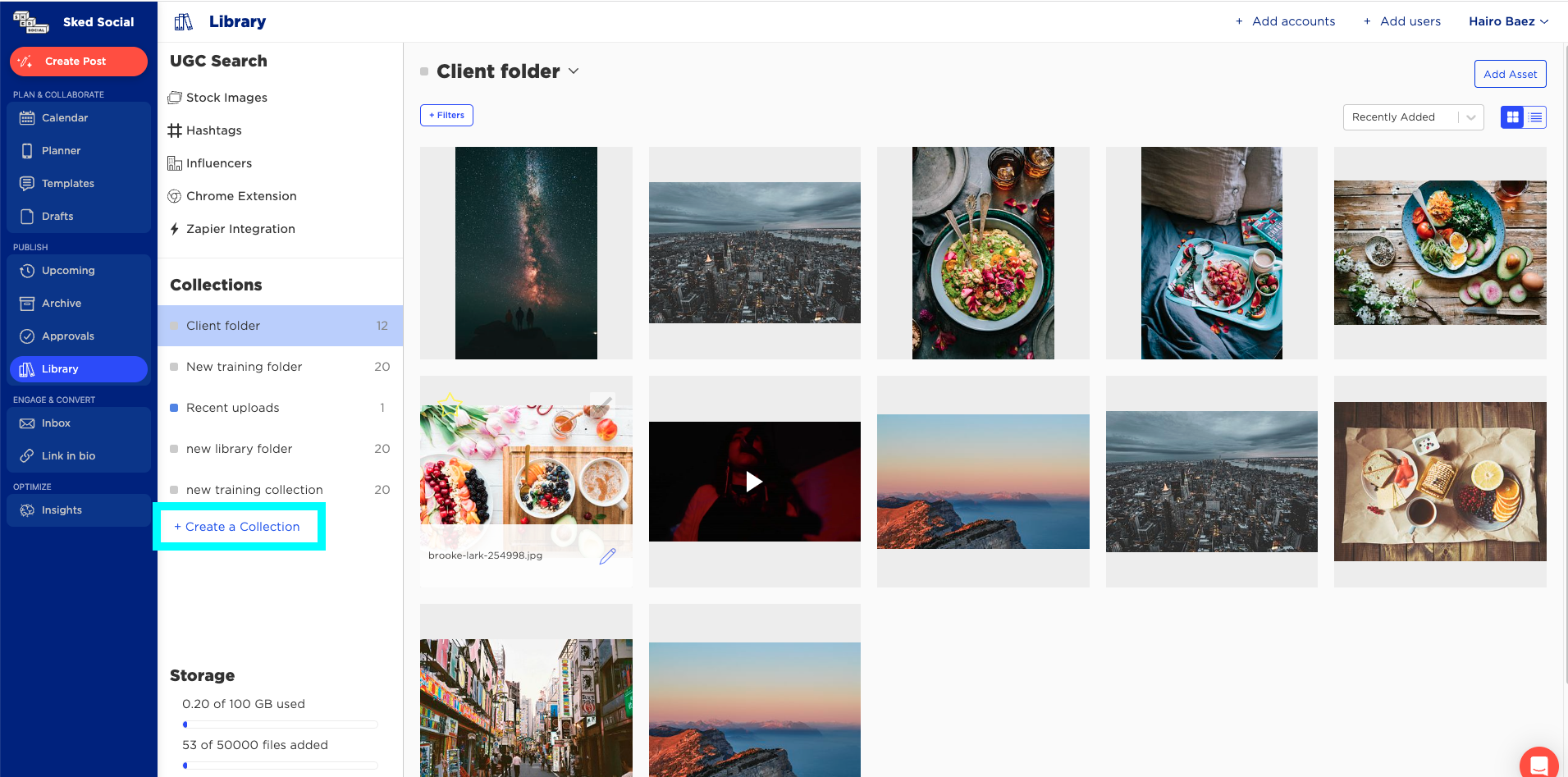
Name your collection and then click the blue Add Collection. You will now see your new collection under the Media Collections header.
To add content to a specific collection, click on the collection and click Add Assets in the top right corner.
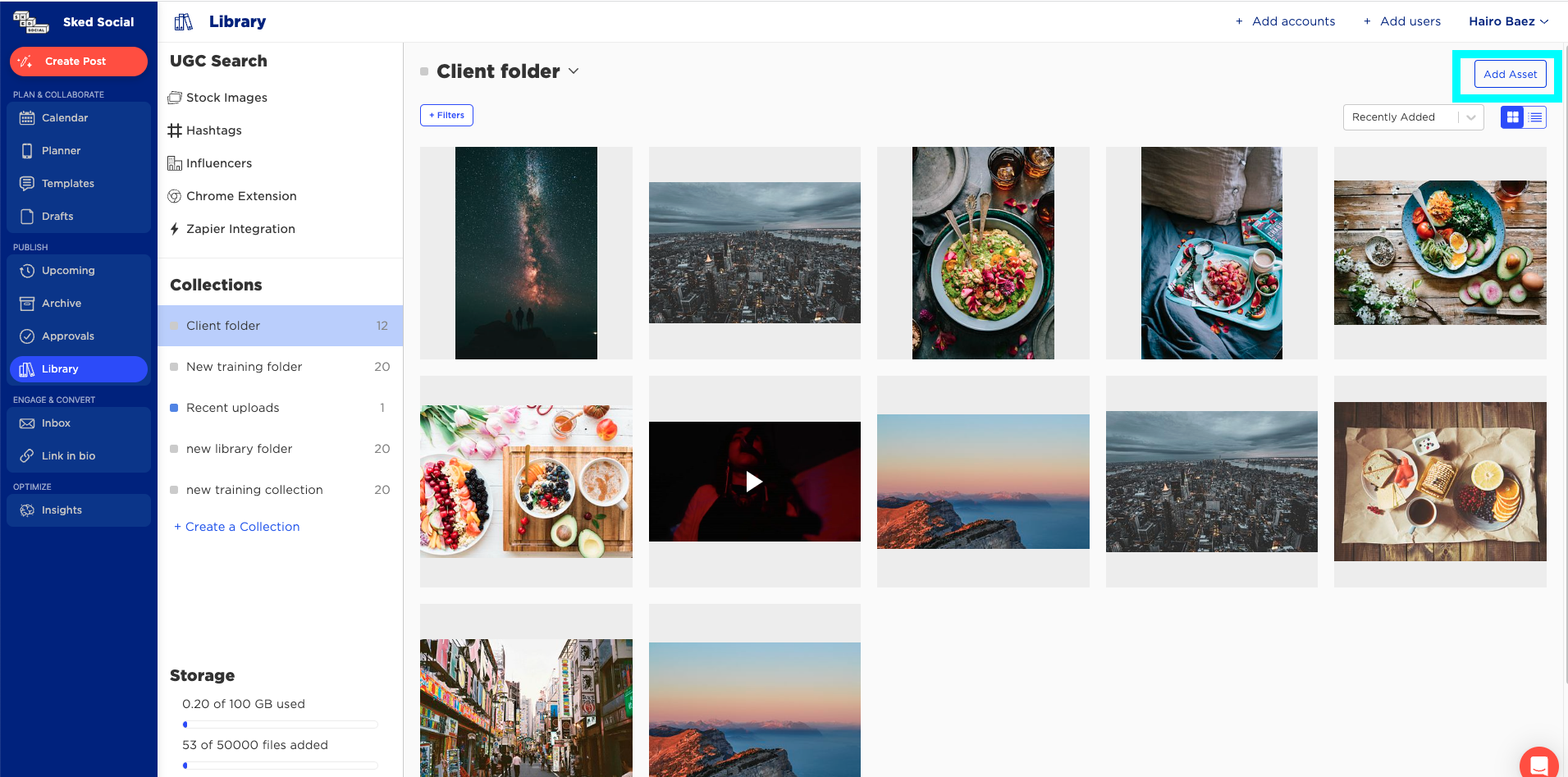
Similarly to uploading your content to Sked, you can add assets to your collections straight from your computer, from Dropbox, Google Drive or Canva.
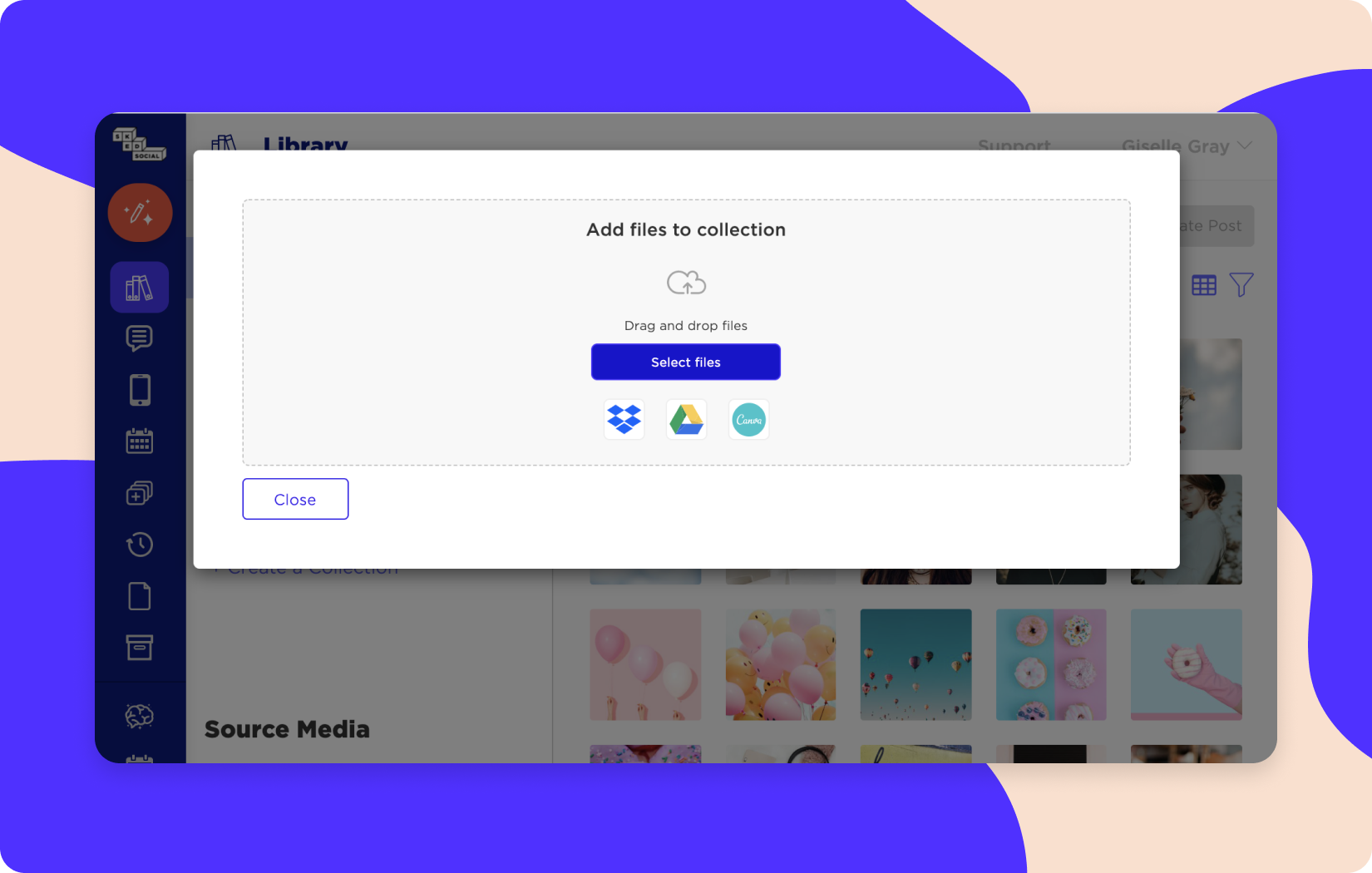
You can upload multiple images at the same time. There is no limit but we suggest no more than 30 at a time. Then click the green Save button in the bottom right corner.
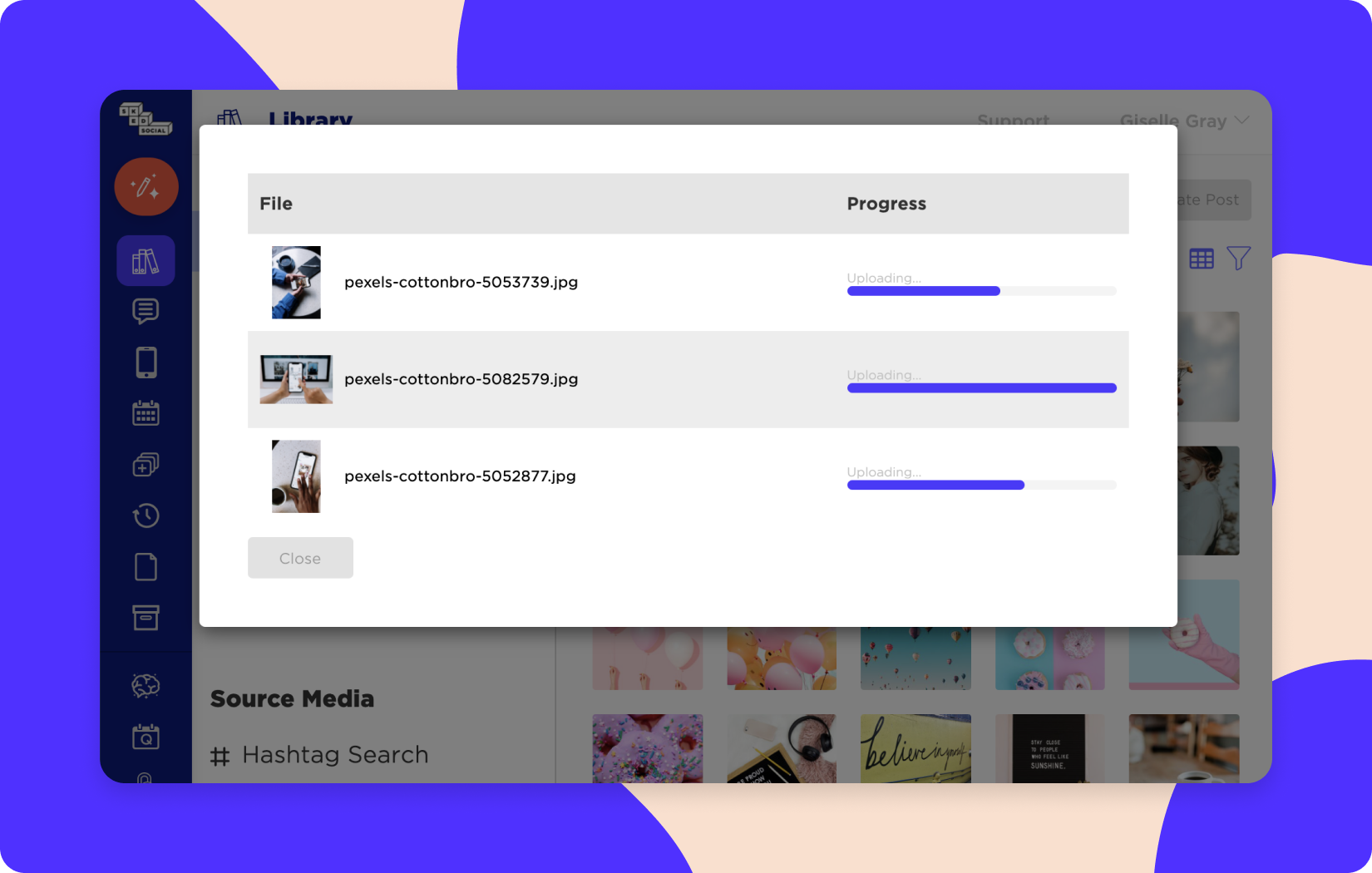
A success message will appear telling you that your assets have been added to the collection.
Asset Tags
Once you upload assets to your collection, you can edit the titles, descriptions and tags to better organize your content. Hover over the image and click the little pencil icon.
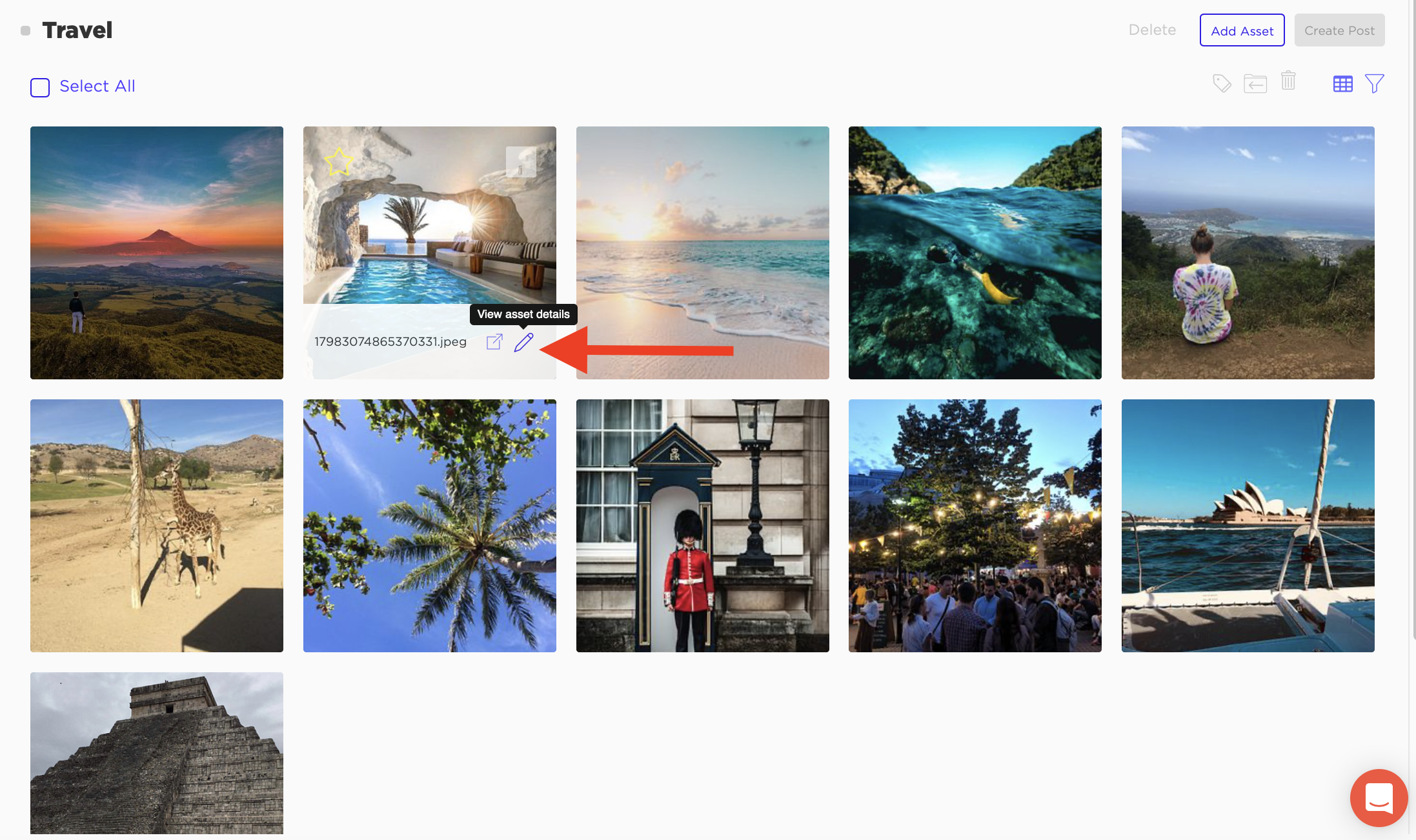
Here you can give the photo a new name, add information about the image, and add tags. Tagging your assets will help you stay organized and easily allow you to search for content with specific tags.
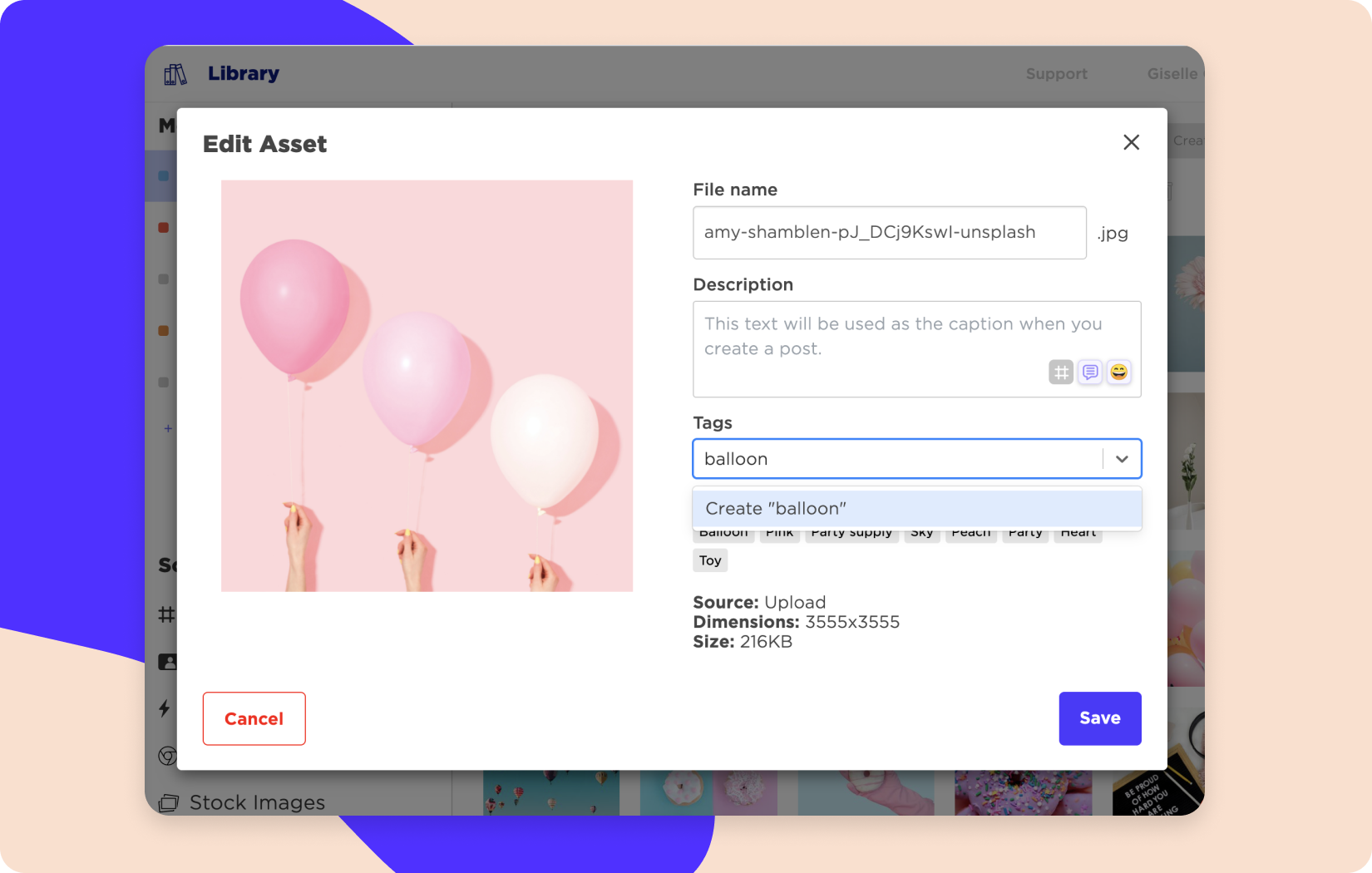
You can create your own tags by typing in the box or you can use the suggested tags. After creating your own tags, they will appear in the drop down options.
Once you tag your content, you can search for specific assets with that tag.
Go to your media collections and click the Filter icon in the top right corner. You can filter by the name of your asset or by tags. Click the arrow to see a drop down of your tags or start typing to search.
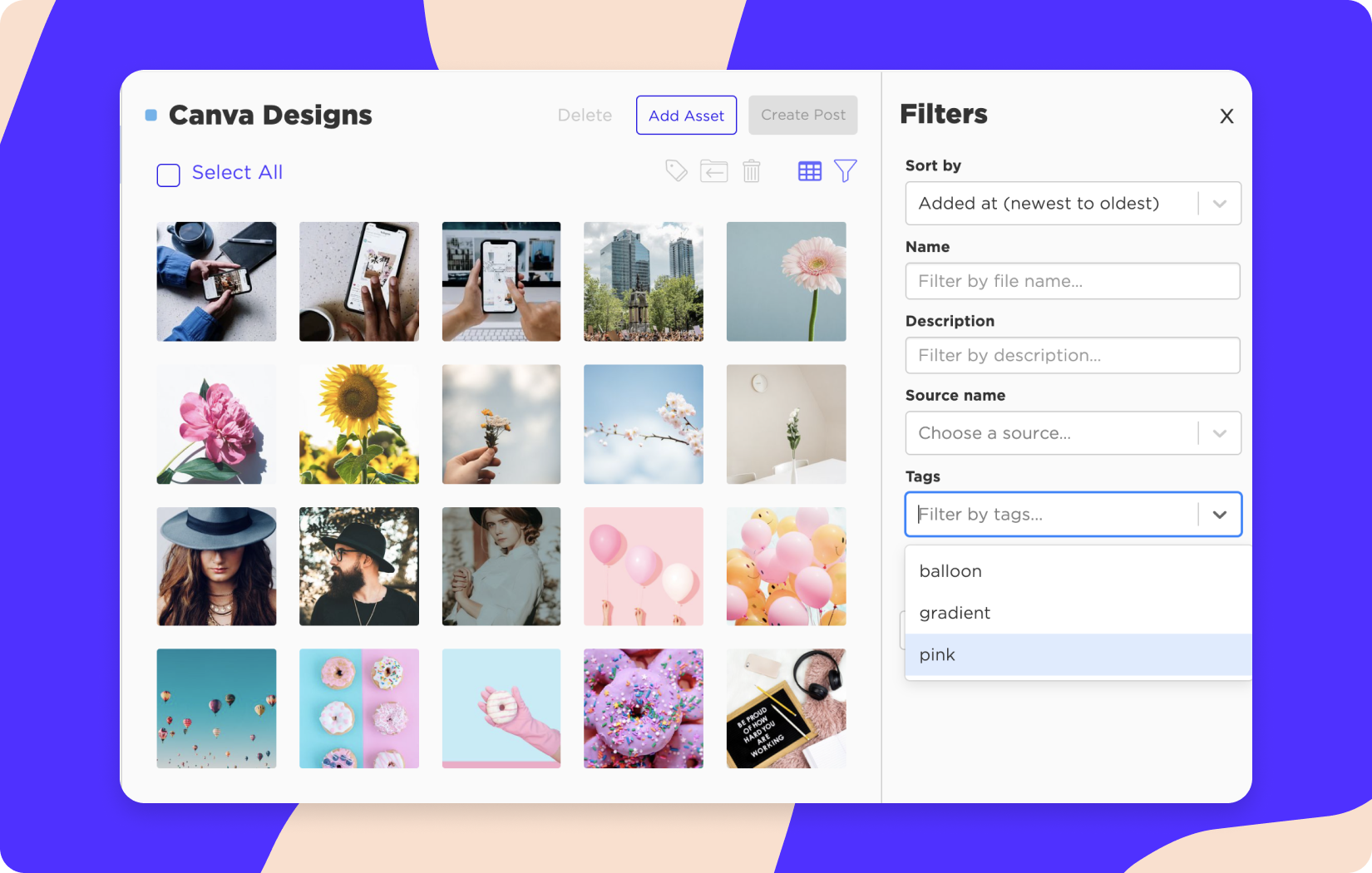
You can also include multiple tags in your search. Your Library will show you all of the assets in the collection with your searched tags.
Watch the video tutorial on tagging assets here.
Source Media
The Source Media section is where you will be able to find user generated content. Find out how to source UGC and add to your collections in this video tutorial.
Instagram Hashtag Search
The hashtag search section essentially lets you follow hashtags to find user generated content.
There are two limits to hashtag search, which we are limited to by the Facebook/Instagram API.
You can only follow up to 30 hashtags at a time, and each hashtag will be available for 7 days. Hashtags will auto-delete after those seven days and then you can add more.
Additionally, hashtag results are limited to posts made in the last 24 hours. As we do not store hashtag search results (it is loaded directly from the Facebook/Instagram API to your browser), you will only see posts made in the last 24 hours.
Click Hashtag Search to expand the dropdown. Select the account that you are trying to search content for. Then click Add Hashtag. A search box will appear below. Type in the hashtag you are looking for.
A popup will appear. Click add hashtag.
From here you will see photos that have appeared on Instagram with the hashtag that you have searched. The content is organized similar to how Instagram displays Top posts in the Explore Page.
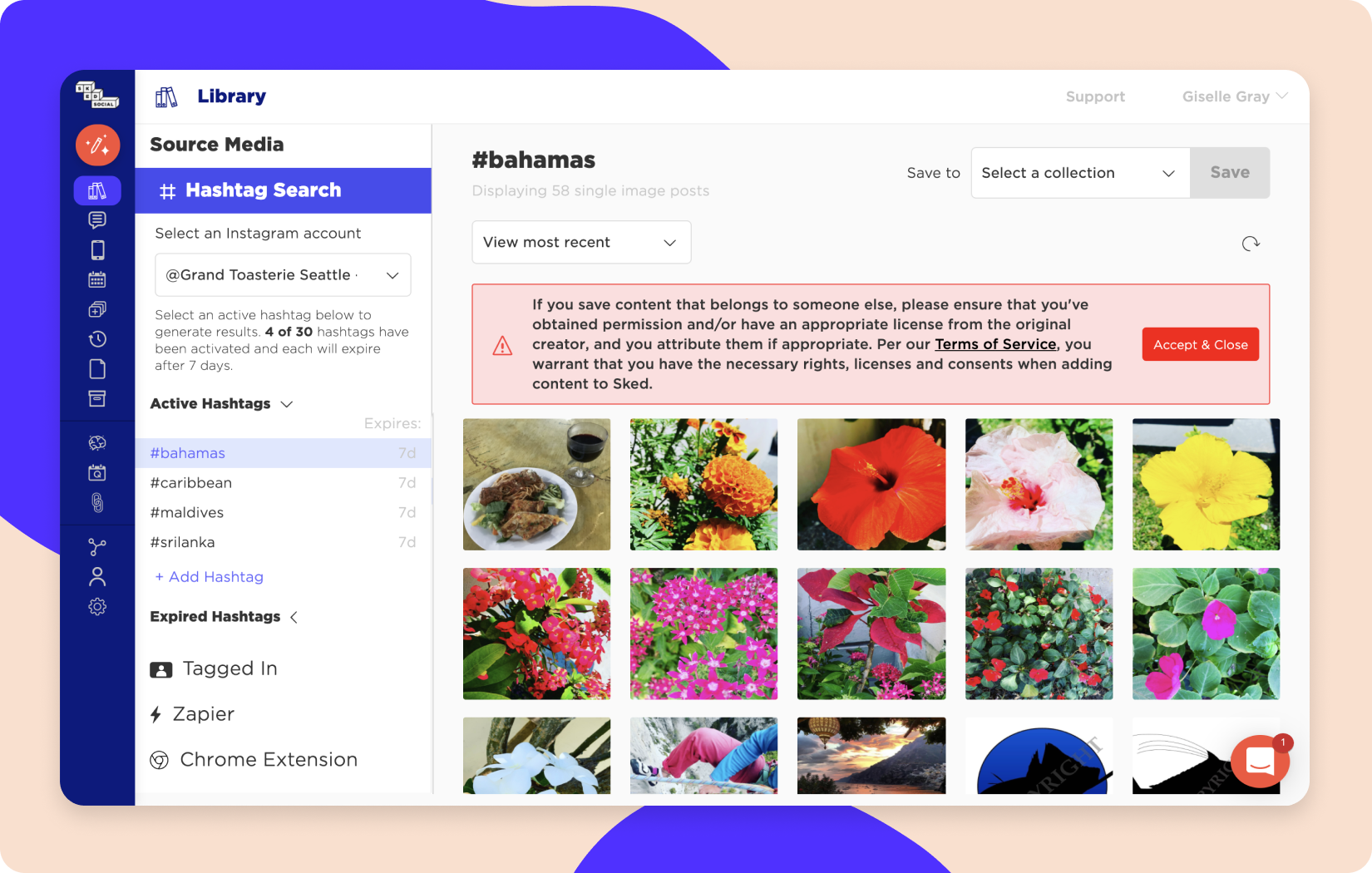
You can easily save assets from your hashtag search to your own collection.
Select the collection you want to save to from the drop down in the top right corner. Then click the image(s) you want to save and click the blue Save button in the top right corner.
If you save content that belongs to someone else, please ensure that you've obtained permission and/or have an appropriate license from the original creator, and you attribute them if appropriate. Per our Terms of Service, you warrant that you have the necessary rights, licenses and consents when adding content to Sked.
We suggest sending the user a quick DM to ask for permission and are currently working on a way to do that straight from this page.
The saved assets will now appear in your collections where you can create posts.
Instagram posts you are tagged in
This feature is currently in beta - ask our team for access.
Much like Instagram hashtag results, you can see all the posts that your account(s) have been tagged in by other users.
Posts that your account is tagged in are only shown if:
-
the post that you are tagged in is public, and
-
the post that you are tagged in has comments enabled
This is a restriction of the Facebook/Instagram API. There is no "time limit" to viewing posts that your account is tagged in, so Library will show all posts your account has (ever) been tagged in.
Influencers
You can also save content to your library directly from creators/influencers you work with. Click on the Influencers tab and type in the Instagram username of the creator you're searching for.
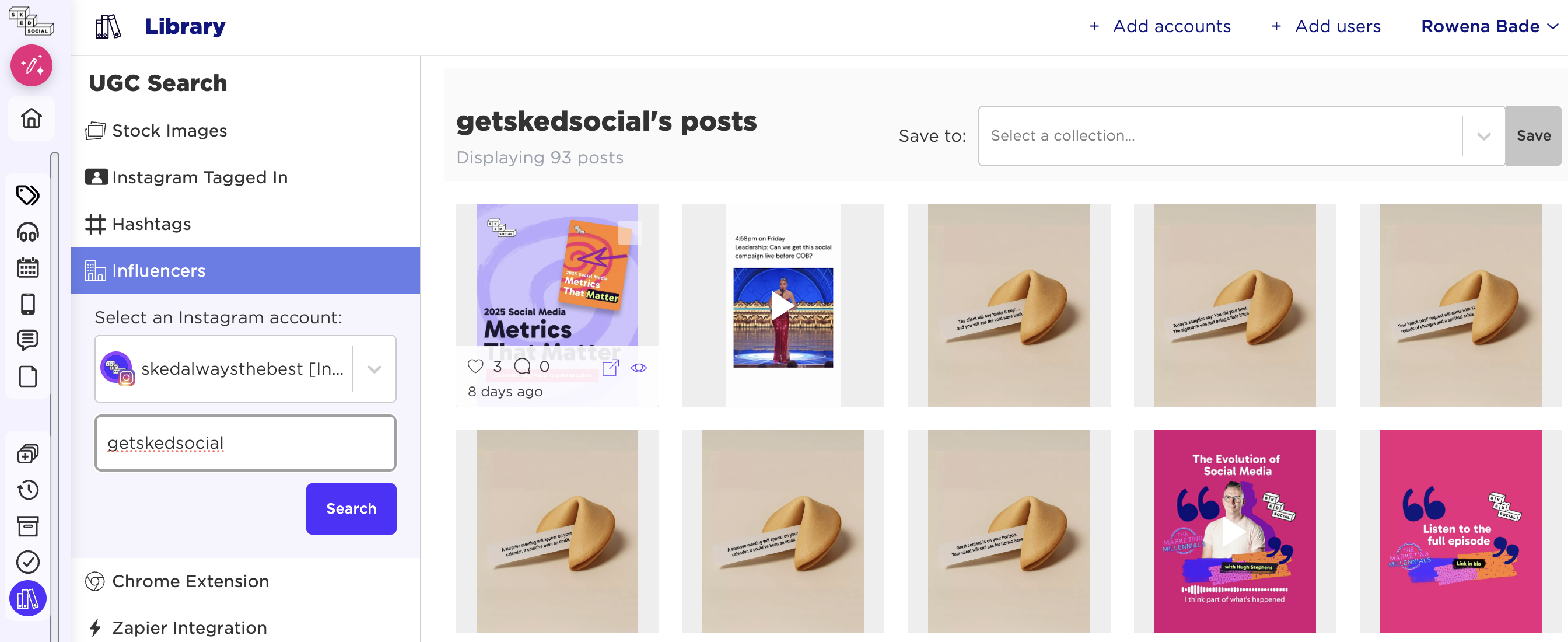
You can save posts directly to your collections by selecting the collection from the dropdown and clicking Save. Again, be sure you have the proper permissions to use the content prior to posting.
Stock Images
You can also source stock photos straight to your library. Our stock photos are provided by Pexels and are subject to the Pexels license, which includes commercial use or modification and does not require attribution. Please ensure that your use of these assets complies with this license.
Click on the Stock Images tab and type your search into the bar at the top.
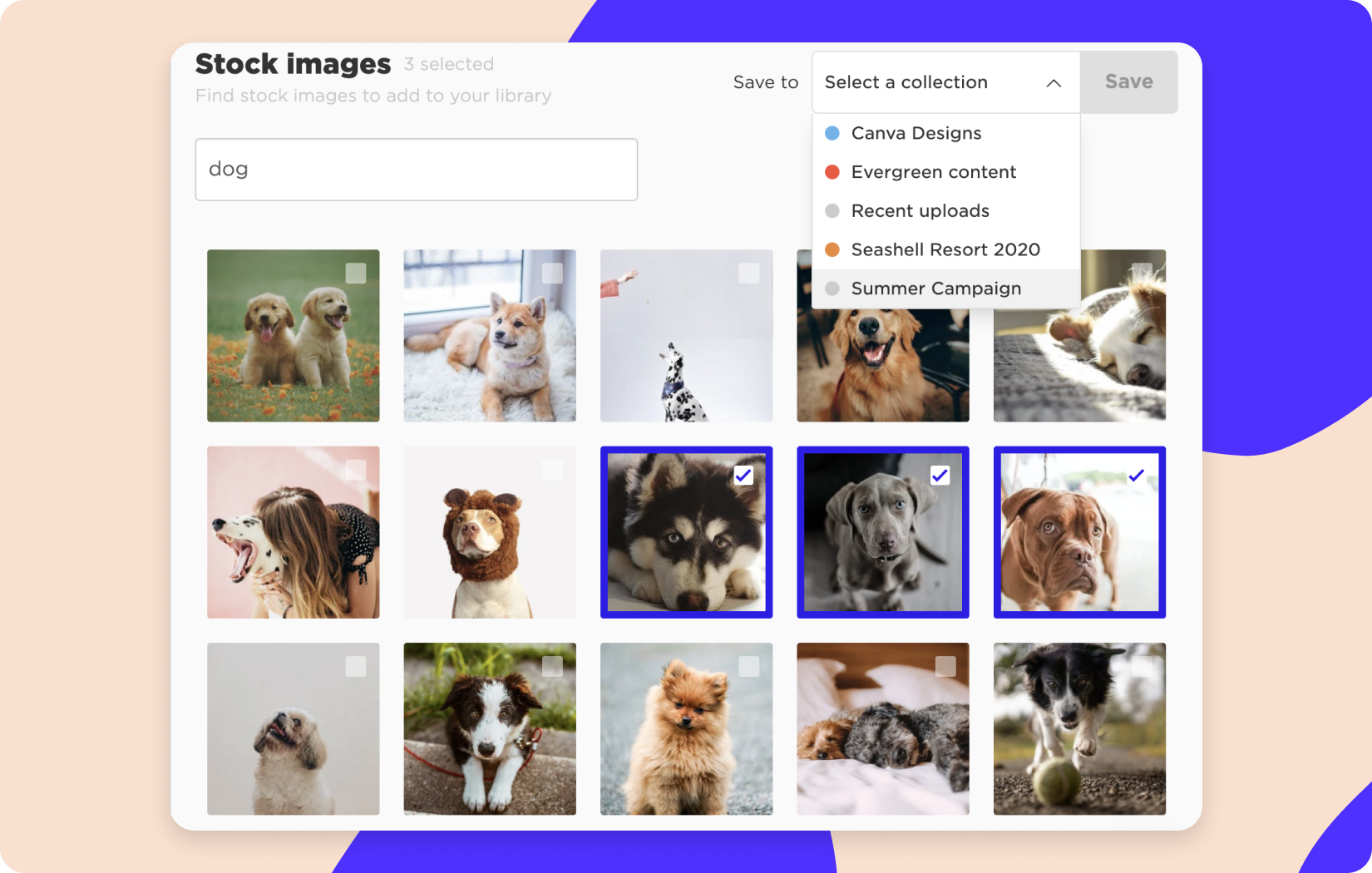
Select the one(s) you want to save and pick the collection to save them to.
Zapier Integration
Zapier is an online automation tool that easily connects your favorite apps. With Zapier integration you can automatically pull content from other apps straight into your sked library.
For example if you work with a photographer that uploads assets to a Google Drive folder periodically, you could have these images automatically be added to a Sked media collection.
For info on how to set up a Zap, click here.
Google Chrome Extension
Browsing the web and see something worth saving to use for social media? No more downloading and re-uploading, save it straight from the page to a collection with our Chrome extension.
Add the extension from the Chrome store and click the Sked icon in your menu bar to choose the collection we save your items to.
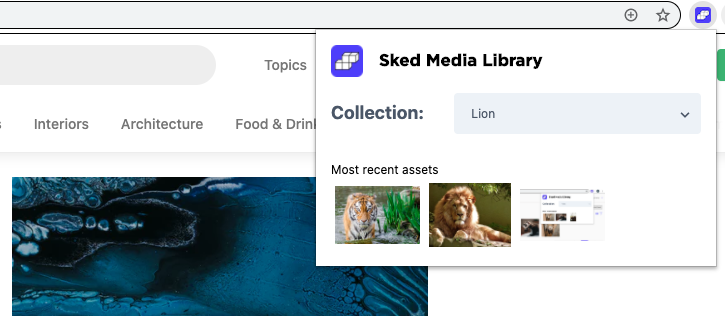
When you see something you love, right click on the image and select 'add to collection'.
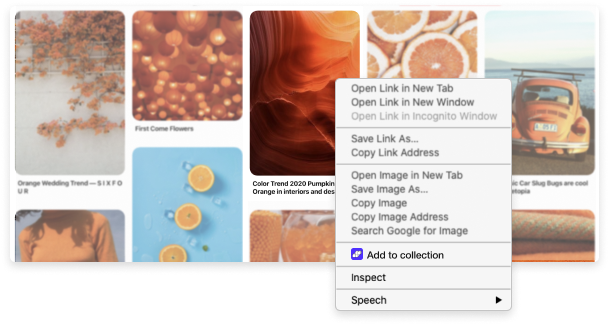
Now the image will be added to the collection you selected. We also keep track of the page you saved it from too, so you can remember later. As with the other content sources, be sure you have the right permissions before you post the content you saved.
Create a post from assets in your collection
To create a new post from assets in your library, click the red create post button in the top left corner of your dashboard. Select the account you’re posting to and click the plus sign to add media.
Select the collection from the dropdown and you’ll see all of the assets in that collection. Click on the assets you want to post so there’s a blue checkmark in the corner or the selected ones. Click the blue Use Media button in the top right corner.
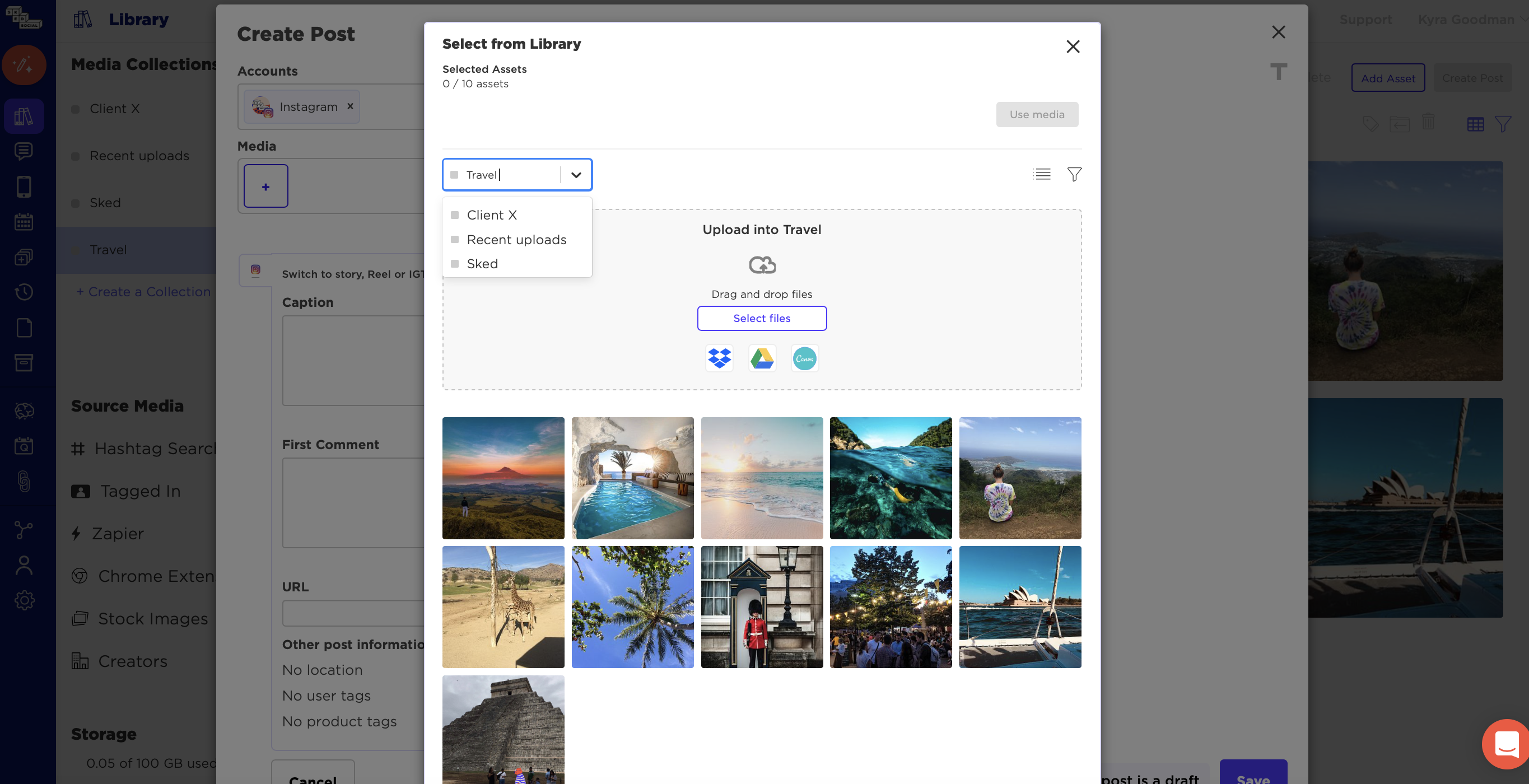
(Note that you can also use assets from other sources here and simultaneously create posts & save them to your library during the creation process)
Now add your captions, hashtags, URLs, tags, alt text and more and save it as a draft, send it to the queue or schedule for a specific date and time.
You can also create posts straight from your library collections. Just select the assets you want to include and click create post in the top right corner and add details and schedule like normal.
